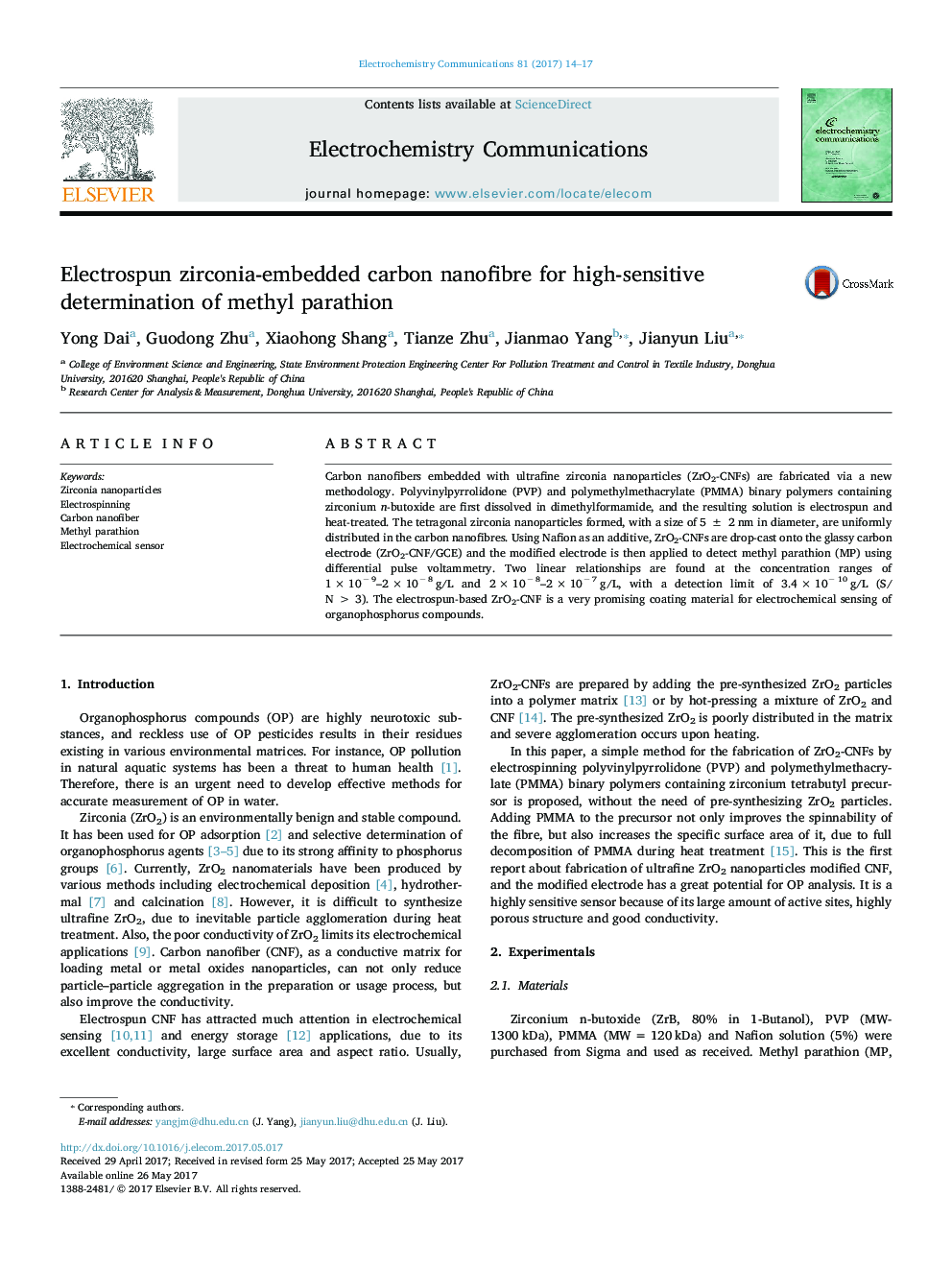| Article ID | Journal | Published Year | Pages | File Type |
|---|---|---|---|---|
| 6469630 | Electrochemistry Communications | 2017 | 4 Pages |
â¢Electrospun zirconia-embedded carbon nanofibers are facilely fabricated.â¢Ultrafine zirconia particles (Ï 5 ± 2 nm) are uniformly distributed in nanofibers.â¢The zirconia/carbon nanofiber electrode is applied for measuring methyl parathion.â¢The detection limit of the zirconia-based sensor to methyl parathion is much improved.
Carbon nanofibers embedded with ultrafine zirconia nanoparticles (ZrO2-CNFs) are fabricated via a new methodology. Polyvinylpyrrolidone (PVP) and polymethylmethacrylate (PMMA) binary polymers containing zirconium n-butoxide are first dissolved in dimethylformamide, and the resulting solution is electrospun and heat-treated. The tetragonal zirconia nanoparticles formed, with a size of 5 ± 2 nm in diameter, are uniformly distributed in the carbon nanofibres. Using Nafion as an additive, ZrO2-CNFs are drop-cast onto the glassy carbon electrode (ZrO2-CNF/GCE) and the modified electrode is then applied to detect methyl parathion (MP) using differential pulse voltammetry. Two linear relationships are found at the concentration ranges of 1 Ã 10â 9-2 Ã 10â 8 g/L and 2 Ã 10â 8-2 Ã 10â 7 g/L, with a detection limit of 3.4 Ã 10â 10 g/L (S/N > 3). The electrospun-based ZrO2-CNF is a very promising coating material for electrochemical sensing of organophosphorus compounds.
Graphical abstractDownload high-res image (107KB)Download full-size image
